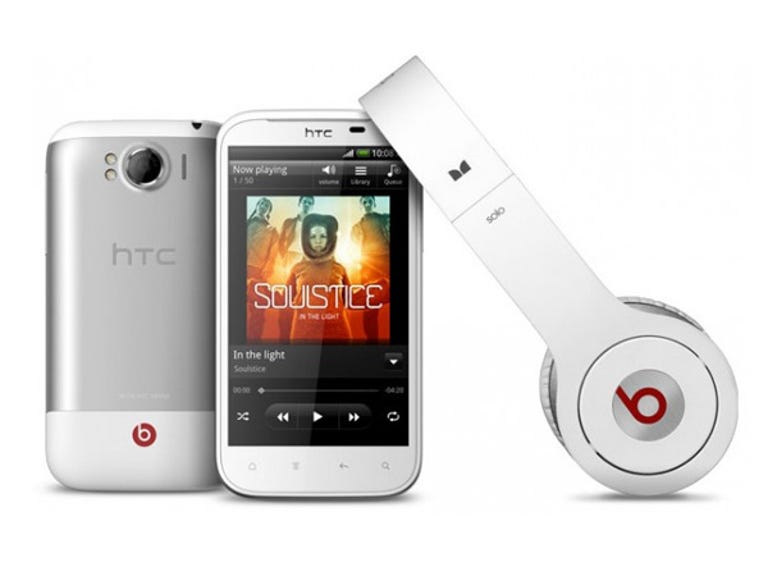 Why You Can Trust CNET
Why You Can Trust CNET HTC Sensation XL review: HTC Sensation XL
HTC proves again that bigger is better, especially when its large-screen phone packs in a great user experience and Beats audio headphones to boot.
Before reading this review, you need to ask yourself an important question, and the answer may make you uneasy. It may have you sadly flexing your muscles in the mirror and questioning the sides of arguments that you've taken in the past, but it is essential to know this about yourself before you meet the Sensation XL: is bigger always better?
The Good
The Bad
The Bottom Line
Design
It's big, oh yes, it's that. With a 4.7-inch screen, the Sensation XL is likely the largest phone we'll see in Australia this year. It's noticeably larger than phones with 4.3-inch displays, and it positively dwarfs anything with a screen smaller than 4 inches (cough, iPhone), and yet it still fits comfortably in our hands. This may prove to be a polarising feature, but we love it, for what it's worth. The screen doesn't feel too big, and yet it delivers a more readable experience in web pages, and in core services like email — plus, the larger screen size makes it easy to make selections on the touchscreen.
Below the glass, HTC chose a Super-LCD panel to power the pixels, and the result is bright and clear, although the contrast is left lacking somewhat. Perhaps we've been spoiled this year with AMOLED screens in the Galaxy S II, the Razr and the N9, but the blacks on the XL do look a little weak. This is nitpicking, though; most users won't question the depth of the blacks on show here.
HTC isn't hanging its hat on this single feature of the phone's design, either. The shape and cut of the XL is gorgeous, with its bone-white colour across the front, and its large aluminium plate across the back. Combined, the XL stands out as one of the most attractive handsets, memorable for not being just another black box, but a phone that is unmistakably HTC when held against your ear during a call.
Physically, the XL is kept quite simple by HTC's designers; the micro USB is on the left-hand side, and the headphone jack on top, but there is no dedicated camera button or extra inputs, like HDMI, on the handset. More importantly, there is no expandable memory slot, so make sure that you are content with the 16GB of internal storage before you buy.
User experience and performance
Many of you reading this review will be comparing the Sensation XL against its stablemate at Vodafone, the Sensation XE, and wondering whether the XL is worth an extra AU$5 per month. We say yes, and for a few important reasons. Besides the larger screen (though smaller, the XE has a higher-resolution screen), the XL has one pretty important leg up on the XE, in that HTC chose slightly newer firmware for its larger handset.
Like computers, smartphones live and die by the quality of the firmware powering them. Strangely, HTC has installed two different firmware builds into these two Sensations. The XL gets the better of it, with a newer version of both Android Gingerbread and the HTC Sense software, where the firmware is a combination of both elements. So, while the Sensation XE has the more powerful hardware, with a dual-core processor, we've actually found that the Sensation XL appears to operate just as smoothly, and achieves better results in benchmarking tests.
The updated version of Sense UI is also a plus for usability. In truth, the differences between the versions of Sense on the XE and the XL are pretty minor on the surface, but HTC does a good job of cleaning up the menus and adding tabs to shorten long lists, like its Personalisation menu, and the app drawer. There are also a couple of new widgets in the XL, too.
Call quality is excellent on this phone, with thanks to HTC's inclusion of a second microphone under the battery cover. Having two mics means that the handset is capable of active noise cancellation during calls. Battery life is also quite good, with the XL managing between two to three hours of actual screen-on usage between charges, or at least a full business day of emails, calls, messages and web browsing.
Camera
With HTC focusing its efforts on creating better photographic experiences on its phones of late, we weren't too surprised when we discovered excellent photos in our camera roll after traipsing about the city snapping pics with the Sensation XL. Not only are the pictures nice, but the camera is also extremely fast. The camera software boots up in a heartbeat, the auto-focus settles in a second or so and the shutter fires in about a quarter of a second. The XL is definitely a fast enough camera to catch even the swiftest of rugrats as they stagger up for their first steps.
Colours really pop, especially when the photos are taken under natural light.
(Credit: CBSi)
We were impressed with the sharpness and the colour in these photos, and it's only when you inspect these pics up close that you can see any noisiness in the way it blends pixels to make the image.
The Sensation brothers take photos of a similar quality, although the XL has a wider angle lens.
(Credit: CBSi)
Video quality is the only letdown, if this is important to you. The 8-megapixel shooter transforms into an HD camera shooting at 720p@30fps, which is a nice spec to have in your smartphone, although, in reality, the videos we shot do flicker quite a bit during playback. It uses the phone's two microphones to record stereo audio while shooting, which, again, is nice to say you have, but the effect of this is hard to measure.


